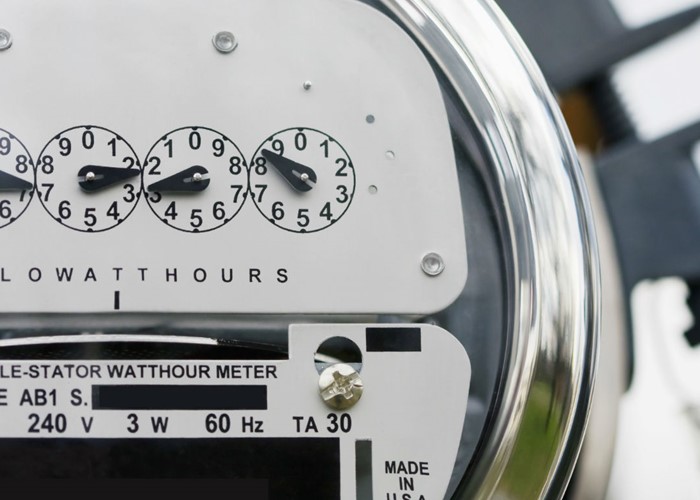5m households woke up £100 worse off today

As the last of the big six energy companies bring in price hikes, Robert Powell finds out how you can avoid being caught out in the cold when it comes to paying your bills this winter...
November just got a lot more chilling for millions of Brits.
EDF Energy’s previously announced price hikes came into force today, adding over £100 on average to the bills of around five million households.
Last rise
EDF is the last of the big six suppliers to bring in hikes. The provider announced the price rise back in September, blaming them on increasing wholesale costs that could no longer be absorbed by the company.
The hike will push the average annual price of a dual-fuel tariff up by £114, from £1,051 to £1,165.
EDF already hiked prices by an average of 7% back in March. This latest increase will up gas prices by 15.4% and electricity by 4.5%.
Every major energy supplier has increased prices twice over the last 12 months. According to some estimates, the last round of hikes alone has pushed up bills by 14.2% to an average of £1,293.
Switch and save
As I reported in Energy firms hiding cheapest deals while profits peak, the government held an emergency summit last month to confront the issue of ballooning energy prices. And their verdict? Keep switching.
Hardly a revelation, I know, but sound advice nonetheless, especially as winter approaches and the cold weather sets in.
Here are the cheapest tariffs around at the moment:
|
Tariff |
Cost* |
Fixed? |
Typical saving** |
|
£1,030 |
For three months (online tariff) |
£315 |
|
|
£1,044 |
No (online tariff) |
£301 |
|
|
£1,050 |
Yes – to Jan 2013 (online tariff) |
£295 |
|
|
£1,050 |
No (online tariff) |
£295 |
|
|
£1,051 |
Yes – end of 2012 |
£294 |
|
|
npower Football 45 (£45 football voucher) |
£1,066 |
No |
£279 |
|
npower Go Fix 8 (£50 love2shop voucher per fuel) |
£1,087 |
Yes – to 3rd Feb 2013 |
£258 |
|
£1,106 |
No (online tariff) |
£239 |
|
|
£1,115 |
Yes – for 12 months |
£230 |
|
|
£1,150 |
No |
£195 |
All tariffs available at the lovemoney.com energy comparison centre.
Source: energyhelpline.com
Now, most of these deals are either fixed or online tariffs.
Fixed tariffs do exactly what they say on the tin: you fix your rate for a set amount of time at a set rate. This protects you from future price rises. However, when the fixed term of your deal ends you will be shunted back onto the supplier’s standard, pricier rate. This is how energy companies cash in on discounted tariffs, as they’re hoping you won’t bother switching out after your deal expires.
Online tariffs are variable and will rise if the supplier hikes rates. Granted, some deals will guarantee that your rate will not rise within a set period of time. But this promise usually only lasts around three months.
So which type of tariff should you go for?
Fixed vs. online
Looking at the above table, there’s really not a lot of difference between fixed and online rates. The best-buy 2013 fix from Scottish Power is only £20 pricier on average than the leading online tariff, first:utility’s iSave v9.
Opting for a fixed tariff will always be something of a gamble on prices rising in the coming months. However, when you consider the relentless hikes pushed through over the last few years, one question does move to the front of my mind - why should energy companies break the habit of a lifetime?
In my book a slight premium for a fixed tariff is a price worth paying for the peace of mind of knowing how much you’ll be shelling out each month on energy. In fact, it may even be worth considering a longer term tariff.
Longer tariffs
Here are some tariffs that run right up to 2014 and 2015:
|
Tariff |
Cost* |
Fixed? |
Typical saving** |
|
£1,200 |
Yes – to 30th June 2014 |
£145 |
|
|
£1,214 |
Yes – to Jan 2015 |
£131 |
|
|
£1,253 |
Prices capped until Jan 2014 (prices also fall in line with standard rates) |
£92 |
All tariffs available at the lovemoney.com energy comparison centre.
Source: energyhelpline.com
The EDF and Scottish Power fixed price deals run until 2014 and 2015 respectively. You’ll notice that the savings on offer from these tariffs are lower than the shorter fixes. However, you will be protected from any further price hikes that may take place for a longer period of time.
The third Scottish Power tariff is a capped deal. This means that while prices may rise, they will not go any higher than the set cap, giving you some peace of mind.
However these deals won’t be around forever.
Act fast
Energy companies have a nasty habit of releasing issue after issue of fixed and online tariffs. And the prices often change between these releases. So if you’re planning on switching to a tariff in the table above, do it soon as it won’t be around forever.
What’s more, it seems some suppliers may even be using government and regulator calls to simplify tariffs as an excuse to axe cheap deals.
Just last week, British Gas withdrew its Web-Saver 13 tariff; a deal that promised to always be 6% cheaper than the supplier’s standard rates. In its place, British Gas is launching a new ‘simpler’ tariff called Energy Online.
And what makes this new simpler tariff so simple?
Well, it offers just 4% off the standard tariff, rather than 6%.
It’s amazing what passes for simplicity nowadays, don’t you think?
*Average usage as defined by OFGEM is 16,500 kWh pa of gas and 3,300 kWh pa of electricity. Actual charges will vary by region and consumption.
** Against a typical bill of £1,345 per year. Figures based on average usage as set by Ofgem for a dual fuel bill paid by monthly direct debit.
More: Compare energy prices with lovemoney.com | UK’s cheapest region for energy | Switch energy before the shock bills
Most Recent
Comments
Be the first to comment
Do you want to comment on this article? You need to be signed in for this feature








